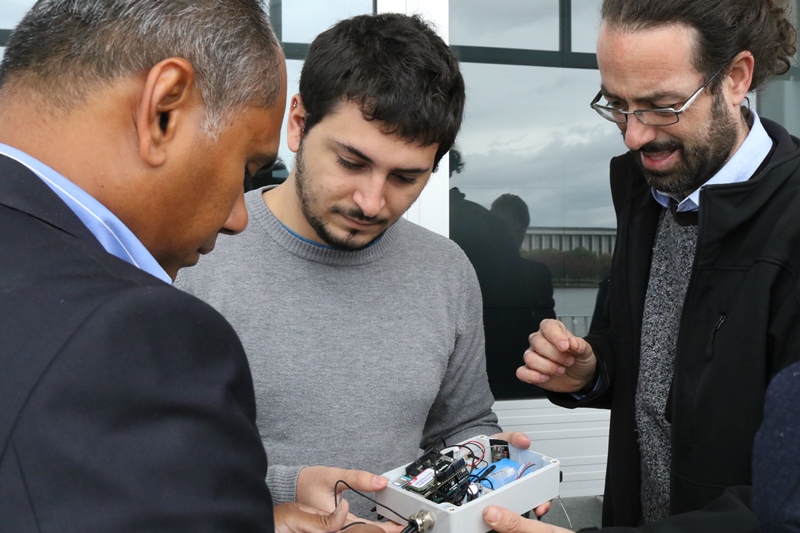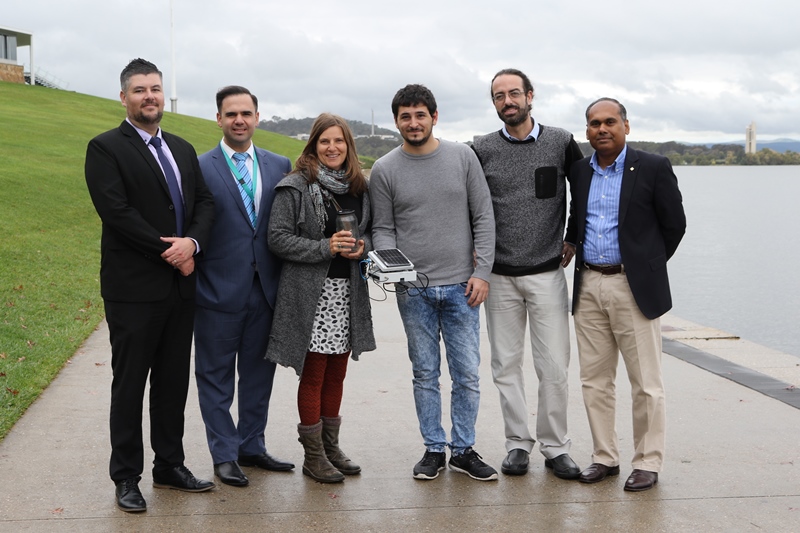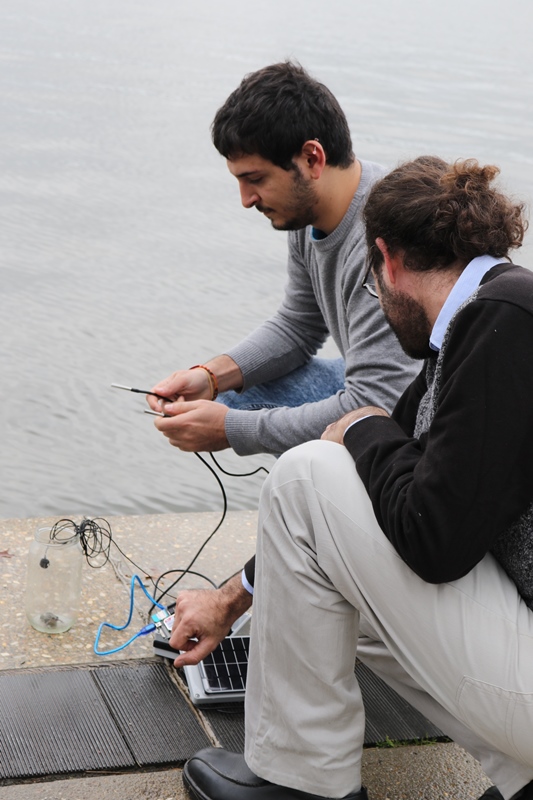Marcus Butler
26 April 2017
A world-first project underway at the University of Canberra is about to hop into action, helping volunteer conservationists better track the local frog population using modern communication technology.
Assistant professor in network and software engineering Kumudu Munasinghe, research associate Adrian Garrido Sanchis, and Anke Maria Hoefer from ACT Frogwatch are aiming to streamline the process by which Frogwatch volunteers listen to and record frog calls in and around the ACT’s waterways.
“Frogwatch is a volunteer-based conservation project which produces a census of frogs for the ACT Governmment,” Dr Munasinghe said. “The frog whisperers spend many evening hours sitting near waterways listening for frog calls and keeping a tally of the various species they hear.
“My project team and I have been able to develop an IoT technology based solution to reduce the time that volunteers need to spend in the field. Using an IoT network we can transmit the frog calls in real time from a remote location to a volunteer’s mobile phone.
Telecommunications company Optus is supporting the project, granting access to the Optus 4G network for the nodes. The connection will allow for real-time audio hook-ups as well as data transmission from the node back to a computer or device used by Frogwatch.
Dr Munasinghe said the basic principle is like giving each of these waterways a mobile phone, allowing Frogwatch to eavesdrop on the frogs conversations.
“These nodes are internet connected devices, and using the IoT network means we can reduce the workload for the volunteers, so they don’t have to be out in the field to listen for the frog calls.
“Having the support of Optus will mean the nodes are connected to a reliable network and the volunteers will be better able to conduct their nightly survey of frog numbers,” he said.
Dr Munasinghe said frog conservation is important, but he can see the technology being introduced around the world where monitoring of other endangered species is critical.
“The frogs of the ACT are the first group to be monitored using IoT technology, but there’s no real difference between them and say some of Australia’s threatened parrots, tigers in India or even rhinos or elephants in Africa.
“The best part is that there are animals that communicate at frequencies humans can’t hear, but this technology can pick up those calls and notify the people monitoring to ensure that nothing is missed.”
Frogwatch is a project of ACT Landcare’s Ginninderra Catchment Group, more than 200 volunteers monitor around 140 sites around the Canberra region. Three IoT networked nodes will be deployed in the pilot around October, when the frog breeding season begins.





